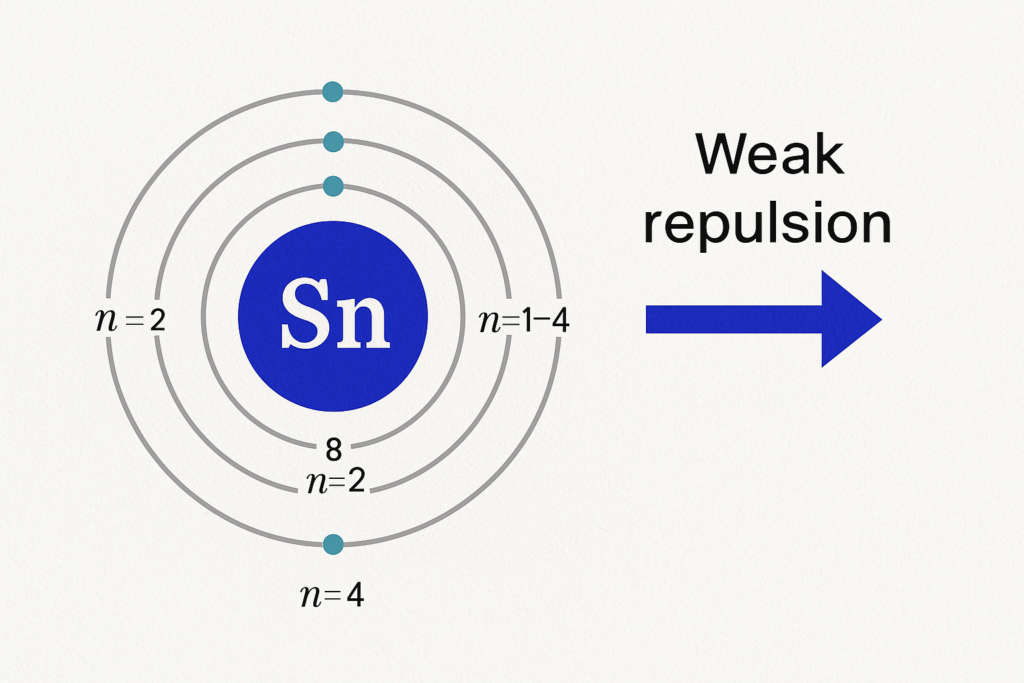Introduction
Is tin magnetic? While the answer may seem straightforward, its implications stretch deep into sourcing decisions for manufacturers, OEM project managers, and B2B procurement specialists. Tin, widely used in electronics, medical devices, and industrial hardware, is often misunderstood in terms of magnetic performance.
This article examines tin’s magnetic nature—and why its non-magnetic behavior matters. More importantly, we explore how buyers can avoid costly sourcing errors, ensure compliance with EMI/EMC standards, and make informed material choices. Drawing from YISHANG’s 26+ years of precision metalworking experience and based on real-world experience with 20,000+ OEM orders annually, we’ll help you determine if tin—and tin-coated components—fit your project requirements.
Tin’s True Magnetic Behavior: What Engineers and Buyers Need to Know
From a materials science perspective, tin is classified as diamagnetic. It does not attract magnets, nor does it retain magnetic fields. This is due to its electron configuration: every electron is paired, so no net magnetic moment forms. When exposed to a magnetic field, tin exhibits a faint, opposing response—so weak that it’s practically undetectable in real-world applications.
Laboratory methods like vibrating-sample magnetometry (VSM) show tin’s magnetic susceptibility is around −3.6 × 10⁻⁶ cm³/mol. That places it in the same range as other non-magnetic metals like silver or bismuth. This makes tin suitable for use in assemblies where magnetic neutrality is essential—especially where signal integrity or electromagnetic shielding is involved.
A common misconception comes from “tin cans,” which are actually steel coated with tin. Steel is ferromagnetic; tin is not. This confusion highlights why professional buyers need precise specifications, not assumptions based on consumer terms. Mislabeling a material as magnetic or non-magnetic can lead to expensive redesigns or failed compliance tests.
Why Non-Magnetic Tin Matters in Industrial and OEM Procurement
For electronics, medical equipment, and aerospace manufacturers, magnetic neutrality isn’t optional—it’s a design and compliance necessity. Tin’s non-magnetic properties reduce electromagnetic interference (EMI), preserve signal clarity, and meet regulatory standards like RoHS and ISO 9001.
In high-speed electronics, tin is a preferred base for solder alloys because it doesn’t distort signal pathways. In PCB-level procurement, buyers often require solder joints that maintain impedance consistency—especially in RF or analog systems. Tin meets this need without introducing interference.
MRI-compatible medical devices also rely on tin. At YISHANG, we’ve supplied tin-plated components to hospital equipment manufacturers that require non-magnetic hardware around sensitive magnetic fields. Such components help prevent false imaging or data corruption caused by magnetic interference.
In aerospace, tin is used in connectors, fasteners, and internal shields to maintain electromagnetic compatibility (EMC). These parts often fall under MIL-STD-461G or similar frameworks. Non-compliant materials can lead to signal overlap, unexpected interference, or grounding faults. We’ve seen an uptick in client requirements for test reports verifying magnetic permeability below 1.003—tin routinely meets that threshold.
Our materials are certification-ready and suitable for bulk order compliance. Whether you need 500 or 50,000 parts, we support full traceability and provide options for low MOQ inquiries.
Material Misunderstanding: Avoiding Common Procurement Pitfalls
Bulk buyers and sourcing managers often face terminology traps that can lead to incorrect procurement. For example, RFQs that list “magnetic tin enclosures” or “magnet-resistant terminals” sometimes reflect internal misunderstandings of what tin can—and cannot—do.
In one real case, a European vending terminal manufacturer specified a “magnetic-safe housing” for a contactless payment device. The initial supplier quoted tin-coated steel, assuming tin’s properties would suffice. We were later brought in to correct the spec, replacing it with RoHS-compliant, tin-coated copper to eliminate unintended interference.
Another issue is visual misidentification. Tin resembles aluminum, zinc, and lead—all non-ferromagnetic—but their functional behaviors vary. Aluminum is paramagnetic, tin is diamagnetic, and alloys can introduce unexpected traits. For procurement accuracy, surface inspection isn’t enough.
YISHANG advises all industrial clients to request mill certificates, alloy compositions, and permeability test reports when sourcing tin components. For example, bronze may contain trace iron or nickel depending on how it’s cast, which can change its response in EMI-critical environments.
To simplify validation, buyers should request documentation aligned with standards like ASTM B545 (for tin coatings) or JIS H8610. These technical benchmarks help ensure suppliers provide truly non-magnetic, application-ready parts.
Working with Tin: Technical Insights for Better Sourcing
In practical terms, tin is both workable and cost-efficient. It’s often used in plating, soldering, or low-friction contact surfaces. But how you source and specify it will affect its magnetic performance.
Tin-plated copper is ideal for signal connectors, battery terminals, and PCB pins. It maintains low resistance and ensures magnetic stability. In contrast, tin-plated steel might appear similar but will introduce magnetic interference—especially in wireless systems or near inductive sensors.
At YISHANG, we support OEM buyers with magnetic verification services, including Hall-effect and Gauss testing, integrated into QC workflows. Our material traceability systems ensure that if you specify tin, you get verified non-magnetic performance, not assumptions.
From a processing standpoint, tin is soft and responds well to CNC forming, deep drawing, and precision bending. However, overheating during welding or soldering can trigger phase changes in certain tin alloys, which may affect not only structure but magnetism. This is why thermal profiling and post-process stabilization are included in our assembly protocols.
Buyers sourcing for long-term projects should also consider oxidation control. Pure tin can develop surface oxides that slightly alter conductivity and response. We offer surface treatments like passivation and clear coating to stabilize long-term electrical and magnetic properties.
Industry Use Cases Backed by Data and Application-Specific Demands
Tin is prevalent in industries where magnetic control is mission-critical. Below are some data-supported applications drawn from YISHANG’s customer base:
Electronics: For PCBs, tin solder alloys (Sn-Ag-Cu or Sn-Bi) are used in over 80% of RoHS-compliant consumer devices. We’ve delivered over 60,000 non-magnetic solder-ready brackets to one European audio device client.
Medical: In MRI-focused production, all structural metals within 1.5m of coil fields must show <1.005 relative permeability. Our tin-alloy paneling passes these specs with room to spare.
Automotive: Advanced Driver Assistance Systems (ADAS) require EMI-optimized control units. Tin-plated enclosures help isolate signals in systems with radar, lidar, and wireless modules.
Energy Storage: BMS (Battery Management Systems) demand non-magnetic, corrosion-resistant terminals. Tin-on-copper is a go-to choice for manufacturers prioritizing long-term circuit stability.
We’ve served clients across the US, Germany, and Southeast Asia—some of which are leading global electronics brands (names withheld per NDA)—with repeat orders for tin-based magnetic-neutral parts.
| Material Magnetic Susceptibility (cm³/mol) | |
|---|---|
| Tin (Sn) | -3.6 × 10⁻⁶ |
| Copper (Cu) | -9.6 × 10⁻⁶ |
| Aluminum (Al) | 2.1 × 10⁻⁵ |
| Steel (Fe) | 1 × 10⁻¹ |
| Zinc (Zn) | -1.3 × 10⁻⁵ |
FAQ: Tin and Magnetic Performance
Q1: Can tin cause EMI issues?
Tin itself does not. Being diamagnetic, it repels magnetic fields faintly and doesn’t amplify EMI. The issue arises when tin is coated over steel or used in impure alloys.
Q2: How to test the magnetic properties of tin components?
Use magnetometers such as Hall-effect sensors or VSM (Vibrating-Sample Magnetometer) equipment. At YISHANG, we offer permeability testing as part of our QA process.
Q3: Is tin plating always non-magnetic?
Only if the substrate is non-ferromagnetic (like copper). If plated over steel, the resulting part will remain magnetic overall.
Conclusion
Tin is not magnetic—and that’s a good thing. For engineers and industrial buyers, this translates into better EMI control, stronger regulatory compliance, and fewer project setbacks.
At YISHANG, we’ve worked with global B2B buyers for over two decades to supply non-magnetic tin-based parts across electronics, medical, energy, and automotive sectors. Our tested, certified, and customizable components help you meet specs without overpaying or risking non-compliance.



